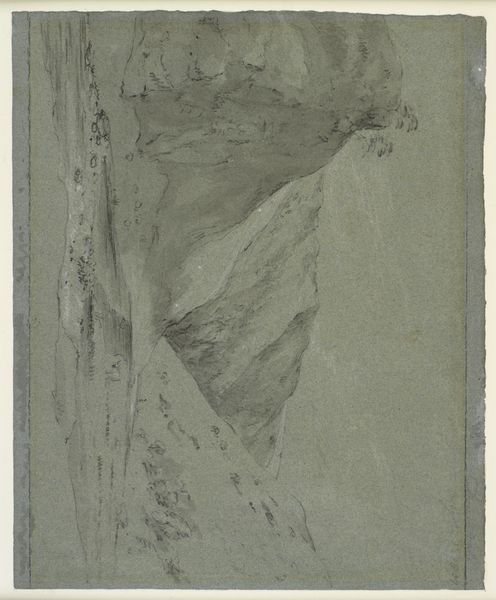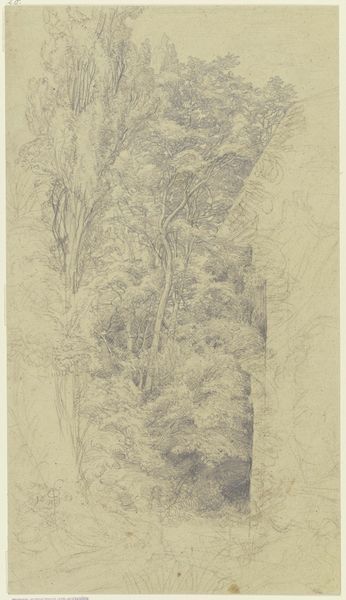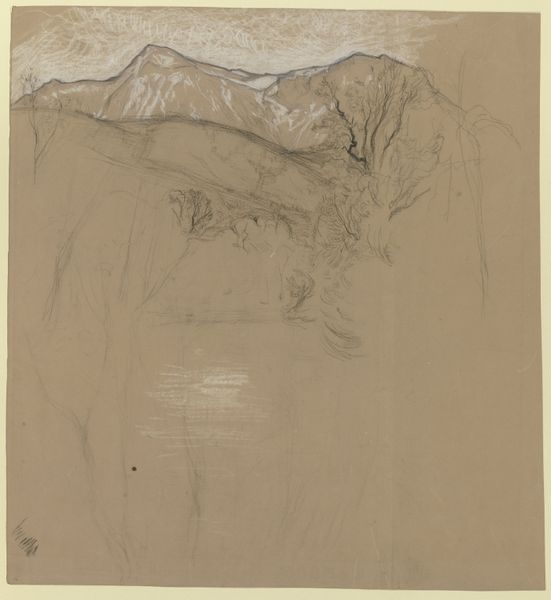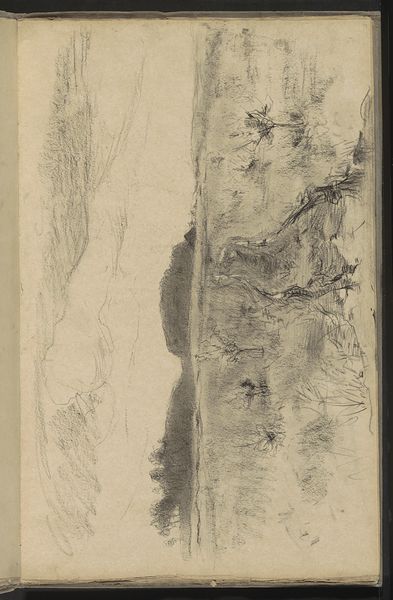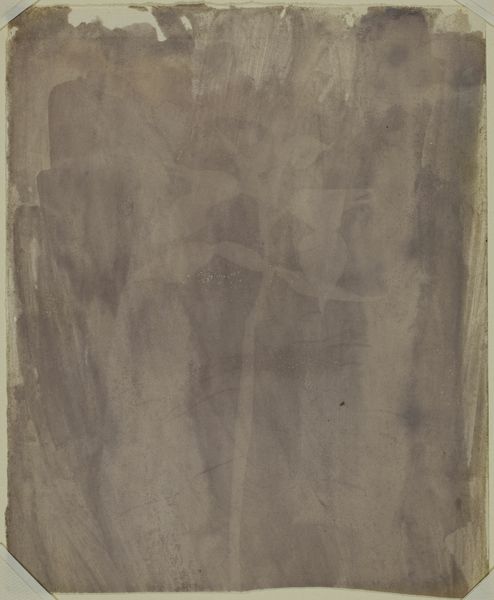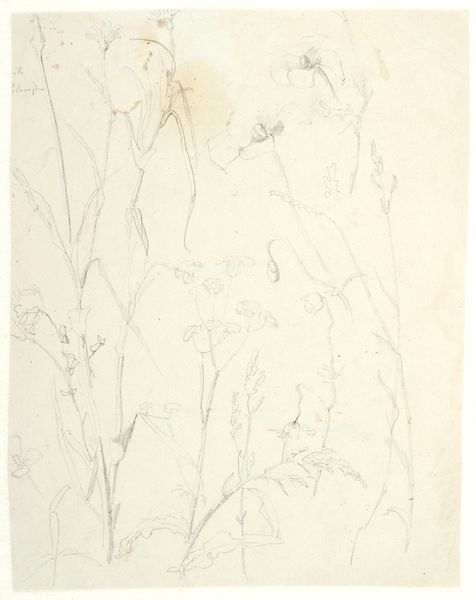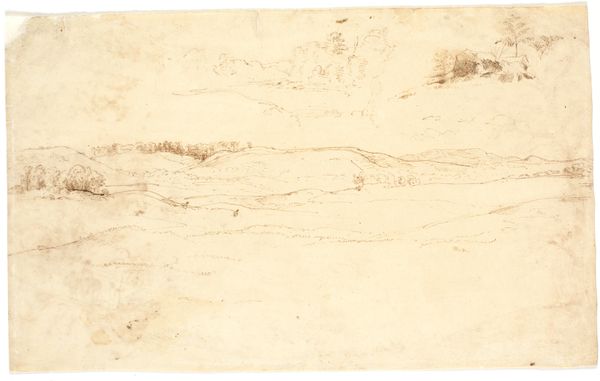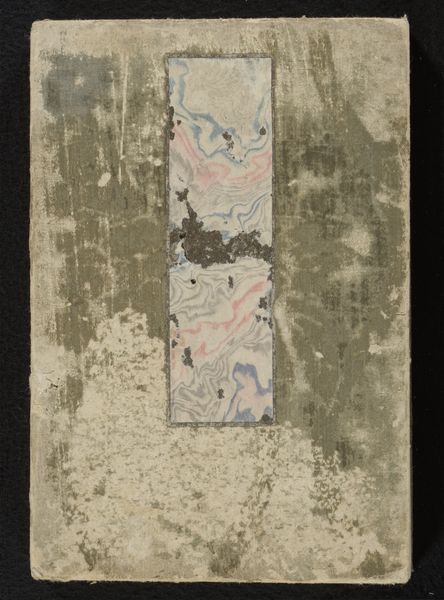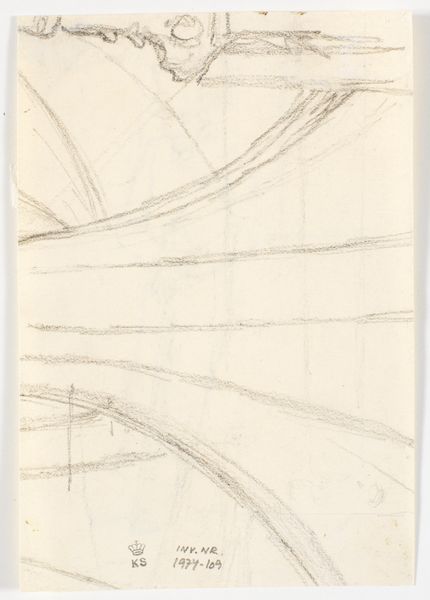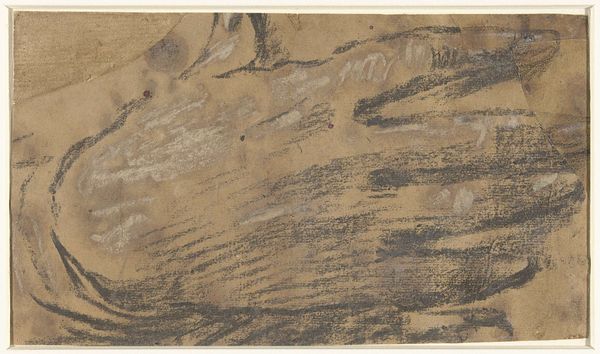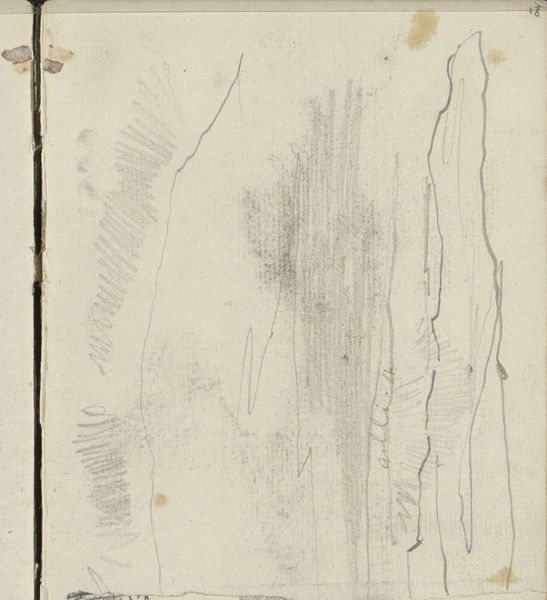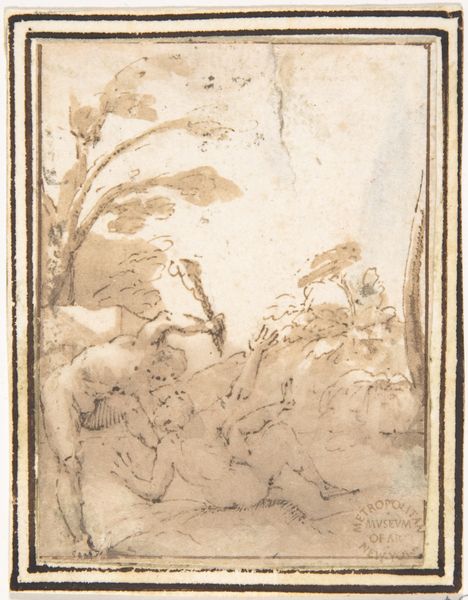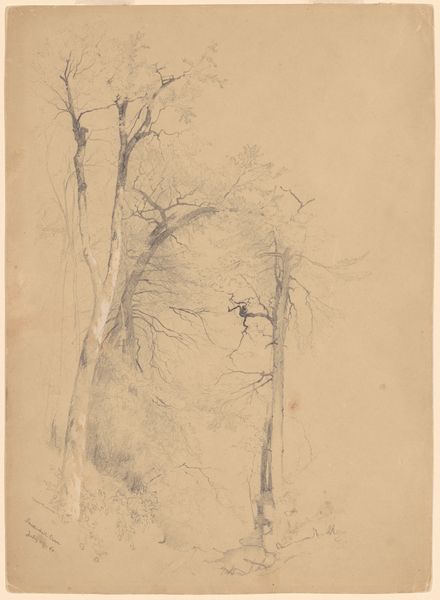
Study of Overgrown Trees; verso: Study of a Cypress and Two Overgrown Trees 1654 - 1710
0:00
0:00
drawing, print, paper, ink
#
tree
#
drawing
#
ink painting
# print
#
landscape
#
paper
#
ink
Dimensions: sheet: 14 13/16 x 9 7/16 in. (37.7 x 23.9 cm)
Copyright: Public Domain
Curator: Before us, we have a drawing by Joseph Werner the Younger entitled “Study of Overgrown Trees; verso: Study of a Cypress and Two Overgrown Trees,” created sometime between 1654 and 1710. It is an ink drawing on paper. What strikes you upon seeing this work? Editor: The textural density is the first thing. I mean, look at that primary tree trunk, it's almost overwhelmed by the creepers and the various accretions on its surface. It really draws me into considering its decay and weathering. Curator: Indeed. Note how Werner has captured the rough texture of the bark through delicate strokes of ink. He also employs negative space to suggest sunlight filtering through the foliage. The composition adheres to a pyramidal structure, anchoring the eye and leading upward through the canopy. Editor: The reliance on what appears to be a single ink is quite fascinating, the varying levels of wash, the applications, speaks to how much attention Werner paid to the physical behavior of his medium. Were paper readily available at the time, do we know? Curator: Werner, serving as the official painter for Peter the Great, had access to fine materials, which speaks to your observation on his focus of technique and form. The artist utilized these elements in such a manner to evoke a somber, even slightly melancholic mood. The lack of vibrant color contributes to the sense of transience. Editor: The question is, with materials like ink and paper being the result of heavy production involving forestry, what would the environmental impact have been to the work at the time, and, how were the involved laborers regarded for their efforts? Curator: Those considerations are, as always, relevant. What truly captures my attention is the interplay between the artist's acute observations of nature and the formal elements employed to structure the composition. Editor: For me, the physical presence of this art object evokes a reverence for the forest. Despite the constraints of its materials, the artist conveys a vivid sense of organic complexity and change over time, asking us to engage not just aesthetically, but tangibly with the earth and the human hand in production. Curator: It has certainly highlighted different, though not unrelated aspects of Werner’s technique and how that engages with not just visual aesthetics, but the sense of natural experience and the conditions which the art arose.
Comments
No comments
Be the first to comment and join the conversation on the ultimate creative platform.
